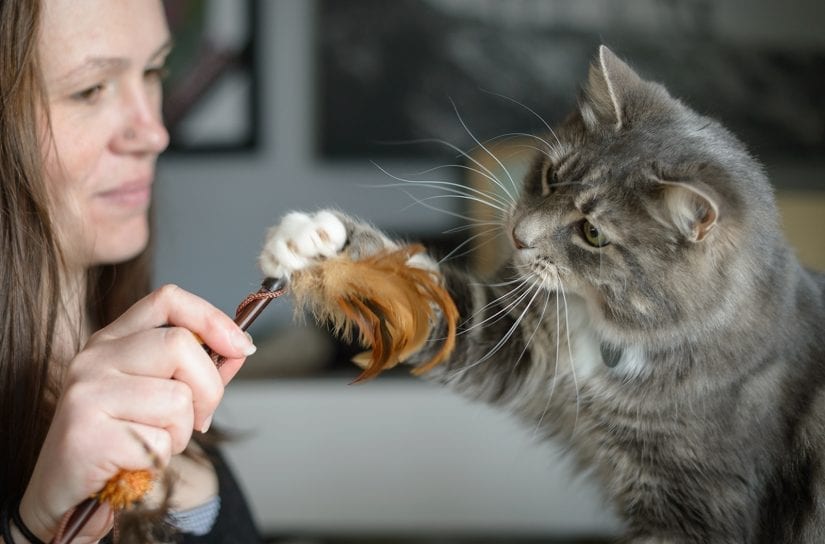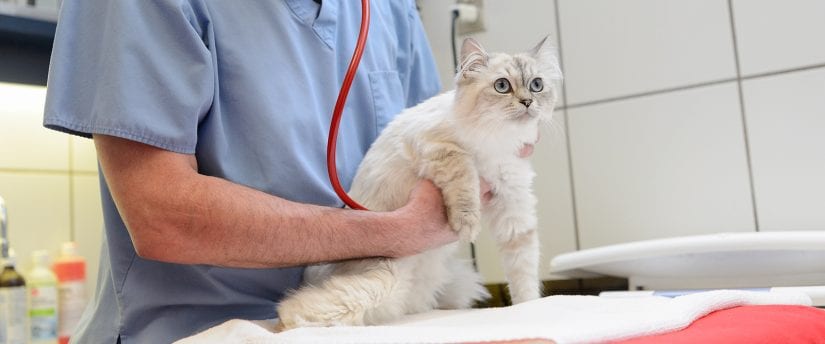Pet care & behaviour
To help cats cope with the stress of being at an animal centre, the BC SPCA developed the Hide, Perch & Go™ box. The box provides cats with more control over their limited environment and allows them to express behaviours such as hiding, perching and face rubbing (scent marking). All of these are natural cat behaviours that help reduce stress.
The Hide, Perch & Go™ box is included with the adoption of your new feline friend! Learn more.

Transitioning an outdoor cat to an indoor cat can be stressful. For the well-being of everyone involved it is best when done gradually. Start by allowing them free access to the indoors at any point in the day. Make the home as enjoyable as possible with toys, scratching posts, plants and more (check out our “DIY Cat Enrichment” (PDF) for some ideas). The goal is to make the the inside of your home as fun as possible to decrease any stress your cat will be feeling.
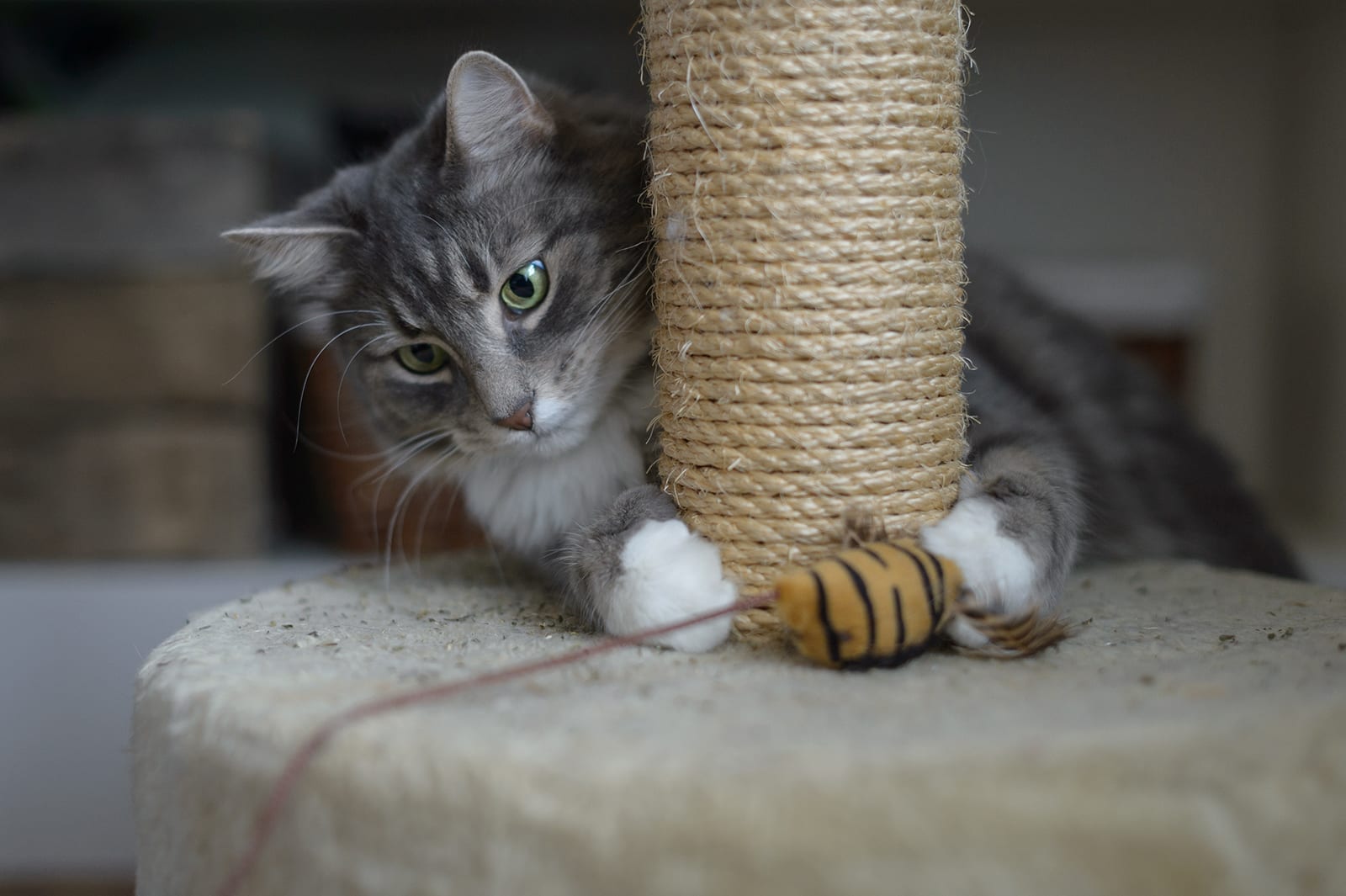
Additionally, you can encourage your cat’s hunting instincts inside the home by feeding them with food puzzles and playing with toys designed to mimic the movements of birds and mice. Outdoors, cats have the opportunity to climb and perch. In order to provide a similar environment inside, add scratching posts, cat trees and perches near doors or windows where they can see outside.
It’s important that a cat has the opportunity to express their innate behaviours when they are kept indoors. A catio is the perfect way to help transition an outdoor cat into the home as it provides the stimulation of an outdoor environment while protected. We have step-by-step guides to help you build a catio.
If your cat is still showing signs of wanting to go outdoors, leash-train your cat and enjoy walks together.

Is this new behaviour?
Cats learn where to go to the bathroom and how to cover it as kittens. It’s easy to teach cats to use a litter box because they want to be able to bury their waste. If they stop using their box it’s a concern. They don’t stop out of spite or disinterest; there’s always a reason.
Have you taken your cat to see a vet?
If not, get him checked by a vet, especially if he’s always used his litter box and now he refuses to use it. If so, and if your vet says he’s healthy, ask how you can help your cat or for a referral to a professional.
Try these cat litter box tips:
1.) Location, location, location
Make sure the cat’s litter box is in a quiet location. Place it in a corner where no one can surprise or scare him and somewhere that isn’t busy. Keep it away from his food.
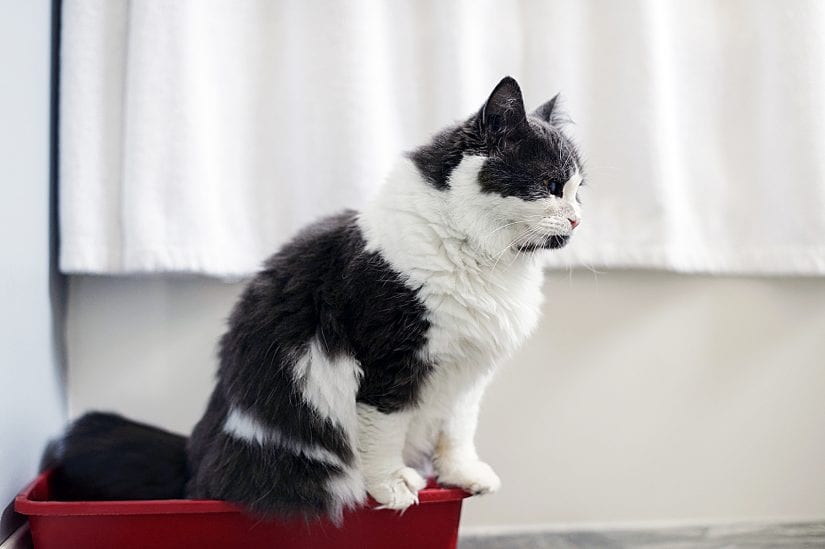
2.) Size does matter
What size is the right size litter box for your cat? Rule of thumb is litter box should be one and a half times longer than your cat. Go bigger if you’re not sure!
3.) Type of box
Think of what your cat needs, not what you prefer. A covered litter box holds the smell in, but this could prevent the cat from using his box. Boxes with high sides might be too difficult for older cats to get into or out of. Self-cleaning boxes might be too scary for some cats. And some cats don’t like plastic liners. A simple box at least four inches deep, the right length for your cat and without a cover is ideal.
4.) How many boxes
If you have more than one cat you should have a box for every cat, plus one extra.
5. ) Litter type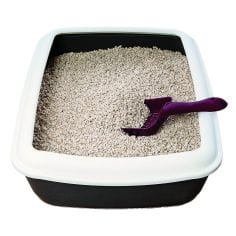
Try different types of litter to see what your cat likes. Put four litter boxes out with different types of litter and see which one he chooses most often. Try different amounts of litter in the box, as some like deep litter while others might not. Stop using the freshener you’ve been using and when you find a litter he likes, stick with it.
6.) Clean it
For many cats a clean litter box is important. Try scooping it twice a day and cleaning it once a week. Some cats may not use it if there’s anything in it.
7.) No bad cats
Remember, you may think your cat is being bad and doing it on purpose. This isn’t true! There is always a reason why your cat is missing the mark. Find out why and help him, never yell or spank your cat.
Find more on litter box issues in our fact sheet Litter box problems treating and reducing cat inappropriate elimination (PDF) and in this video on how to get your cat used to their litter box.
